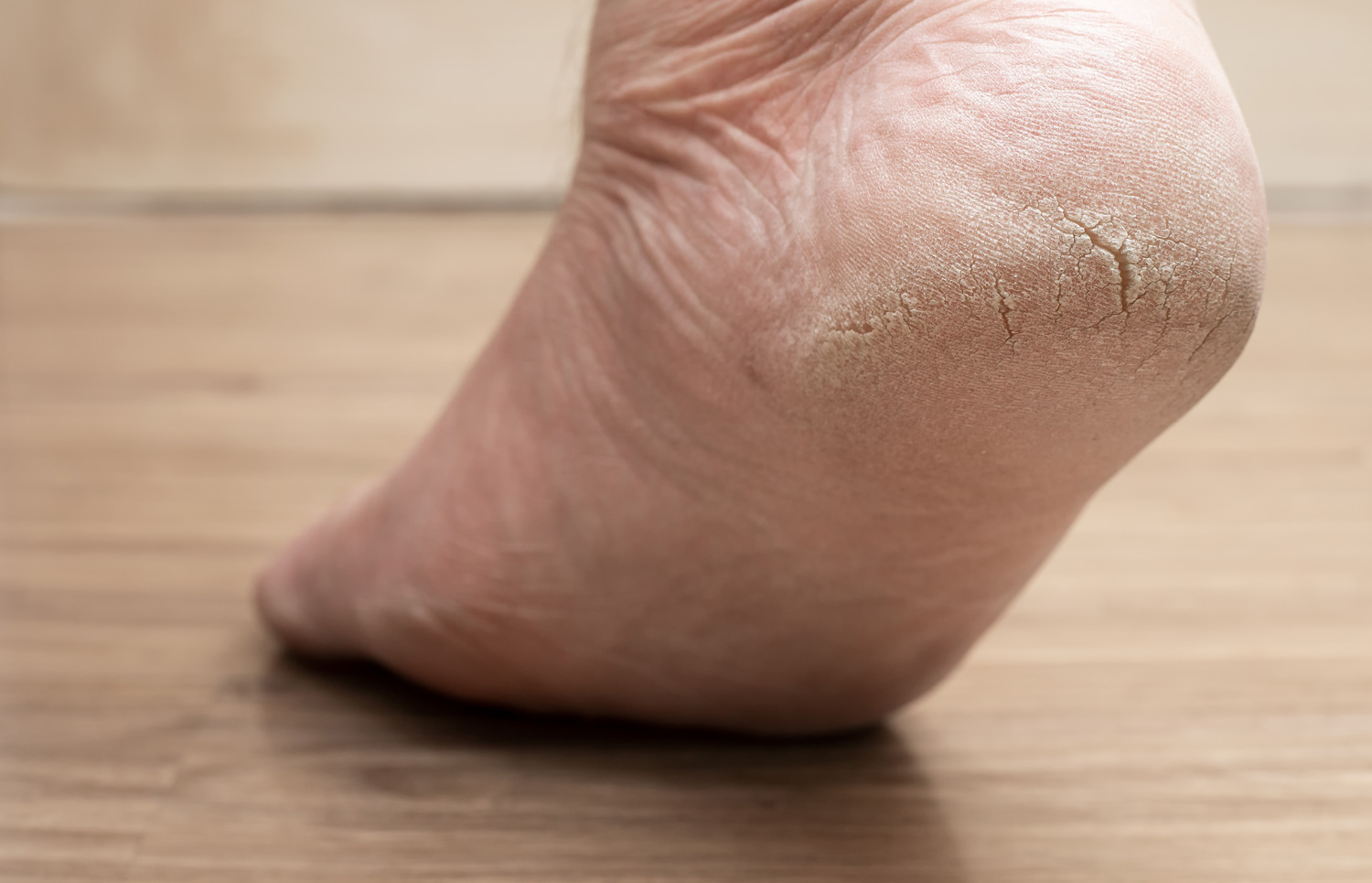Dry heels are more common than you think. According to the National Foot Assessment of 2012, over 20 percent of adults in the US are living with cracked heels. For some, it may simply be a cosmetic issue, but for others, these cracks can become quite painful.
What Causes Dry Heels?
Cracked heels can occur for several reasons. One of the most common reasons is dehydrated skin. When the skin around the heel begins to dry out, the skin attempts to protect itself by forming thick layers of skin called calluses. When you walk, the callouses crack due to the pressure put on your foot.
Common Causes of Dry Heels
Inappropriate Footwear
Repeatedly wearing shoes that expose your heels can cause them to dry out. Open-back shoes and sandals can cause fat under your heel to expand sideways, increasing the possibility of cracked heels.
Nutritional Deficiencies
A lack of minerals and vitamins in your diet can contribute to dry, cracked heels. Specifically, a lack of iron and zinc can negatively affect your heel health.
Pressure
If you need to stand on your feet all day at work or home, this can put pressure on your heels, causing them to dry out. The soles of our feet bear the brunt of our weight, so be cognizant of how much time you spend on your feet to reduce dry heels.
Natural Treatments For Cracked Heels
Heel Balms
Heel balms moisturize and soften dry heels, and some exfoliate them as well. They will help to increase skin elasticity in your heels.
Regularly Soak and Exfoliate Your Feet
As the skin around your heels has become cracked and hard, you’ll need to soften the skin to remove it. Soaking your feet can help to soften the skin around your heels. Soak your feet in clean, lukewarm, soapy water for 15-20 minutes.
Once the skin has softened, gently exfoliate with the area with a foot scrubber or pumice stone to remove dead skin. Pat your feet dry, and follow up with a heel balm or thick moisturizer.
Apply Liquid Bandages To Seal Wounds
Liquid bandages can help to seal any deep wounds and prevent further cracking. Be sure to apply the liquid bandages to clean dry skin. Liquid bandages differ from traditional bandages as these come in a spray.
This makes it more convenient to use on your feet, where a typical bandage may easily come off. They are best used on heel cracks that are prone to bleeding.
Contact Canyon Oaks To Seek Treatment
While your dry heels shouldn’t cause you too much alarm, you might sense that there is a deeper issue. If so, why not see a podiatrist? Our doctors here at Canyon Oaks are ready to answer any questions you may have regarding your foot health.
To get in contact with us, give us a call or fill out our online contact form. Once we receive your form, a member of our team will be in contact with you as soon as possible. We look forward to helping you have healthier feet soon!

